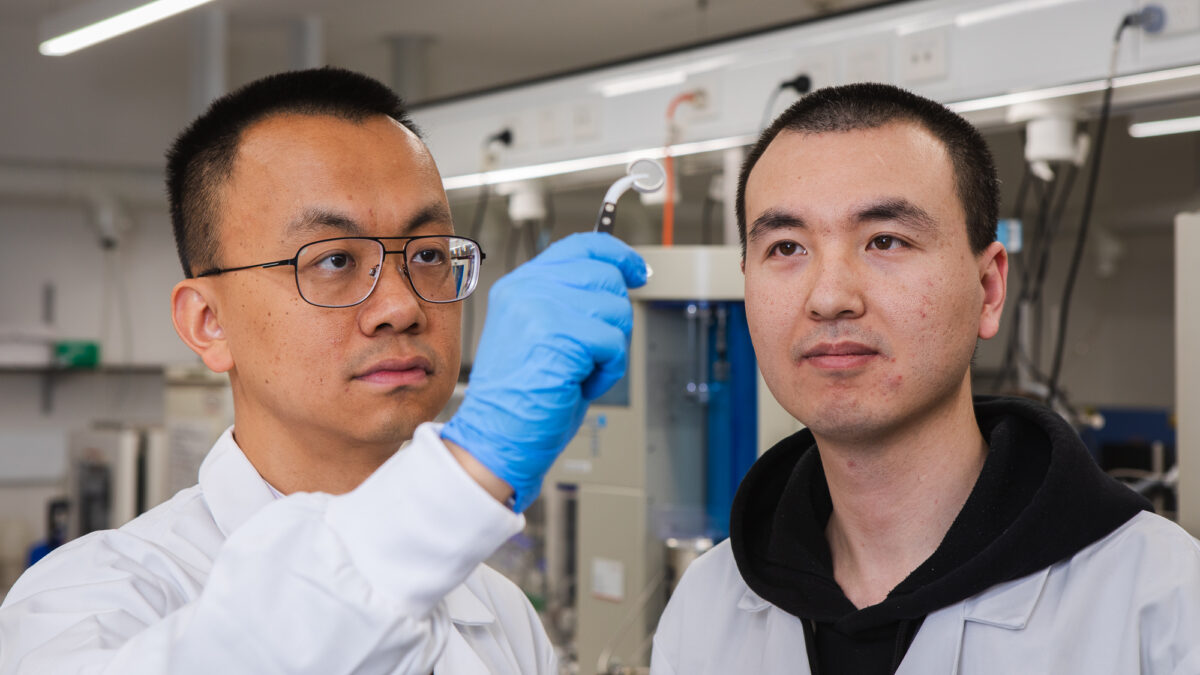Professor Tianyi Ma, School of Science lead researcher at RMIT University said their batteries are at the cutting edge of an emerging field of aqueous energy storage devices, with breakthroughs that significantly improve the technology’s performance and lifespan.
The team use water to replace organic electrolytes – which enable the flow of electric current between the positive and negative terminals – meaning their batteries aren’t combustible – unlike their lithium-ion counterparts.
Ma said the batteries were well suited for large-scale applications, making them ideal for grid storage and renewable energy integration – especially in terms of safety considerations.
“As our technology advances, other kinds of smaller-scale energy storage applications such as powering people’s homes and entertainment devices could become a reality.”
Potential for mass production
The process of manufacturing the water batteries indicate mass production is feasible, given materials such as magnesium and zinc are abundant in nature.
“They’re also inexpensive and less toxic than alternatives used in other kinds of batteries, which helps to lower manufacturing costs and reduces risks to human health and the environment,” Ma said.
“Magnesium-ion water batteries have the potential to replace lead-acid battery in the short term – like one to three years – and to replace potentially lithium-ion battery in the long term, 5 to 10 years from now.
“Magnesium is lighter than the alternative metals, including zinc and nickel, has a greater potential energy density and will enable batteries with faster charging times and better capability to support power-hungry devices and applications,” Ma said.
The team’s water battery is closing the gap with lithium-ion technology in terms of energy density, the RMIT scientists claim.
“We recently made a magnesium-ion water battery that has an energy density of 75 watt-hours per kilogram (Wh kg-1) – up to 30% that of the latest Tesla car batteries, so the next step is to increase the energy density of our water batteries by developing new nano materials as the electrode materials.”
Lifespan
After making a series of small-scale trial batteries for numerous peer-reviewed studies to tackle various technological challenges, including boosting energy storage capacity and the lifespan, the team has made the batteries last significantly longer, comparable to the commercial lithium-ion batteries in the market, and ideal for high-speed and intensive use in real-world applications.
“With impressive capacity and extended lifespan, we’ve not only advanced battery technology but also successfully integrated our design with solar panels, showcasing efficient and stable renewable energy storage,” Ma said.
Recyclable
Ma said the water batteries also address end-of-life disposal challenges that consumers, industry and governments globally face with current energy storage technology as they can be disassembled safely, and the materials can be reused or recycled.
As part of an Australian Research Council (ARC) Linkage project, Ma’s team is developing water batteries in collaboration with industry partner, GrapheneX, a Sydney tech innovator.
“We also collaborate closely with researchers and experts from renowned universities and research institutions in Australia, US, UK, Japan, Singapore, China and elsewhere. These collaborations facilitate knowledge exchange and access to cutting-edge facilities. By drawing on this global team’s expertise in different areas, we can tackle the complex challenges involved from various angles.”
The team’s latest research Synergy of dendrites-impeded atomic clusters dissociation and side-reactions suppressed inert interface protection for ultrastable Zn anode is published in Advanced Materials.
A comprehensive review of the team’s research history, challenges and potential of water batteries has been published in Energy and Environmental Science: Ammonium-ion energy storage devices for real-life deployment: storage mechanism, electrode design and system integration.
This content is protected by copyright and may not be reused. If you want to cooperate with us and would like to reuse some of our content, please contact: editors@pv-magazine.com.








1 comment
By submitting this form you agree to pv magazine using your data for the purposes of publishing your comment.
Your personal data will only be disclosed or otherwise transmitted to third parties for the purposes of spam filtering or if this is necessary for technical maintenance of the website. Any other transfer to third parties will not take place unless this is justified on the basis of applicable data protection regulations or if pv magazine is legally obliged to do so.
You may revoke this consent at any time with effect for the future, in which case your personal data will be deleted immediately. Otherwise, your data will be deleted if pv magazine has processed your request or the purpose of data storage is fulfilled.
Further information on data privacy can be found in our Data Protection Policy.